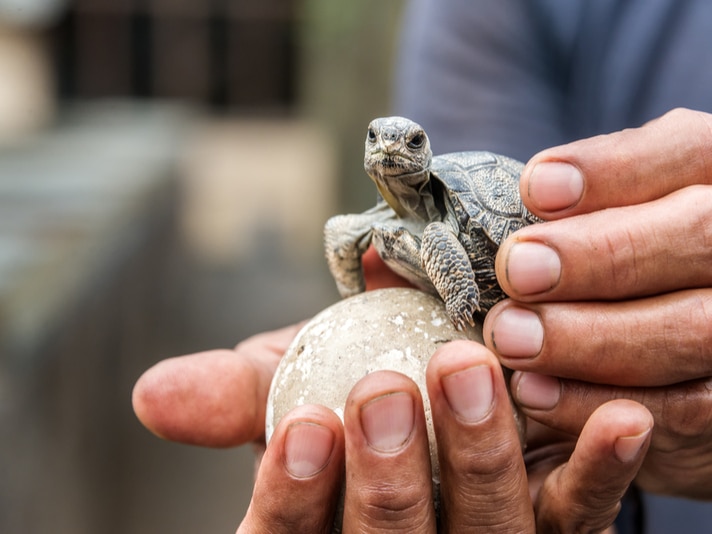A breeding program at the Galapagos National Park in the Galapagos Islands will hopefully result in Floreana giant tortoise offspring.
Scientists are working to bring back a giant tortoise that has long thought to have been extinct via a breeding program at the Galapagos National Park in the Galapagos Islands. Scientists studying the Galapagos tortoise determined that the once-thought extinct Chelonoidis elephantopus, also called Chelonoidis niger, species that lived on Floreana Island, is living on Isabela Island based on a 2011 DNA analysis of more than 1600 tortoises. It was previously thought that the tortoise went extinct more than 150 years ago.
"Charles Darwin was among the last people to see these tortoises alive – it's hard to believe their recent rediscovery will pave their way to restoration of the species back on its home island during the next decade," Dr. James Gibbs a State University of New York College of Environmental Science and Forestry conservation biologist told ESF Communications. Gibbs is co-director of the Giant Tortoise Restoration Initiative (GTRI) coordinated by the Galapagos National Park Directorate (GNPD) and Galapagos Conservancy.
Read More
Extinct Floreana Island Galapagos Tortoise Reappears
The Current Status Of Galapagos Tortoises
Lonesome George, The Last Known C.n.abingdoni Galapagos Tortoise Dies
The program was launched by the Galapagos National Park Directorate in an effort to bring back Chelonoidis niger also called C. elephantopus and known as the Floreana giant tortoise, named after the island in the Galapagos chain in which it once inhabited.
The program is more than 10 years in the making, based on exploration and genetic analysis of the Wolf Volcano saddleback tortoises on the northernmost volcano of Isabela Island in the chain.
Researchers were on a mission in November 2015 to sample the DNA of as many saddleback tortoises that they could in an effort to find tortoises that had ancestry from both the Floreana and Pinta Island tortoise populations.
The researchers were able to find tortoises with Floreana tortoise DNA but no Pinta tortoise DNA was present among the group.
Four breeding groups were established in March 2017 comprised of three females and two males in each group. They expect offspring from the groups to be released onto Floreana Island in five years.
You can read the full paper on the breeding program in Scientific Reports.



